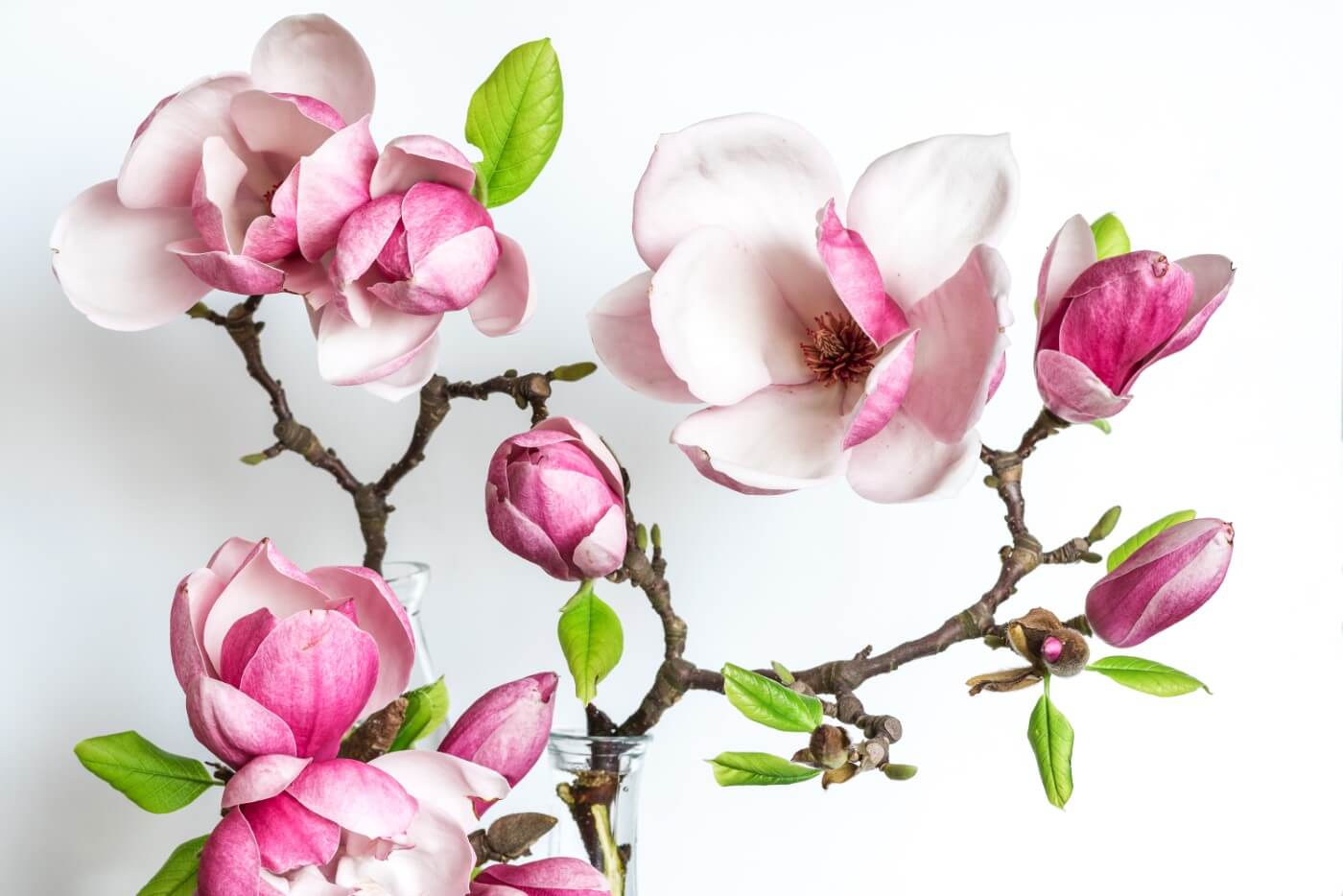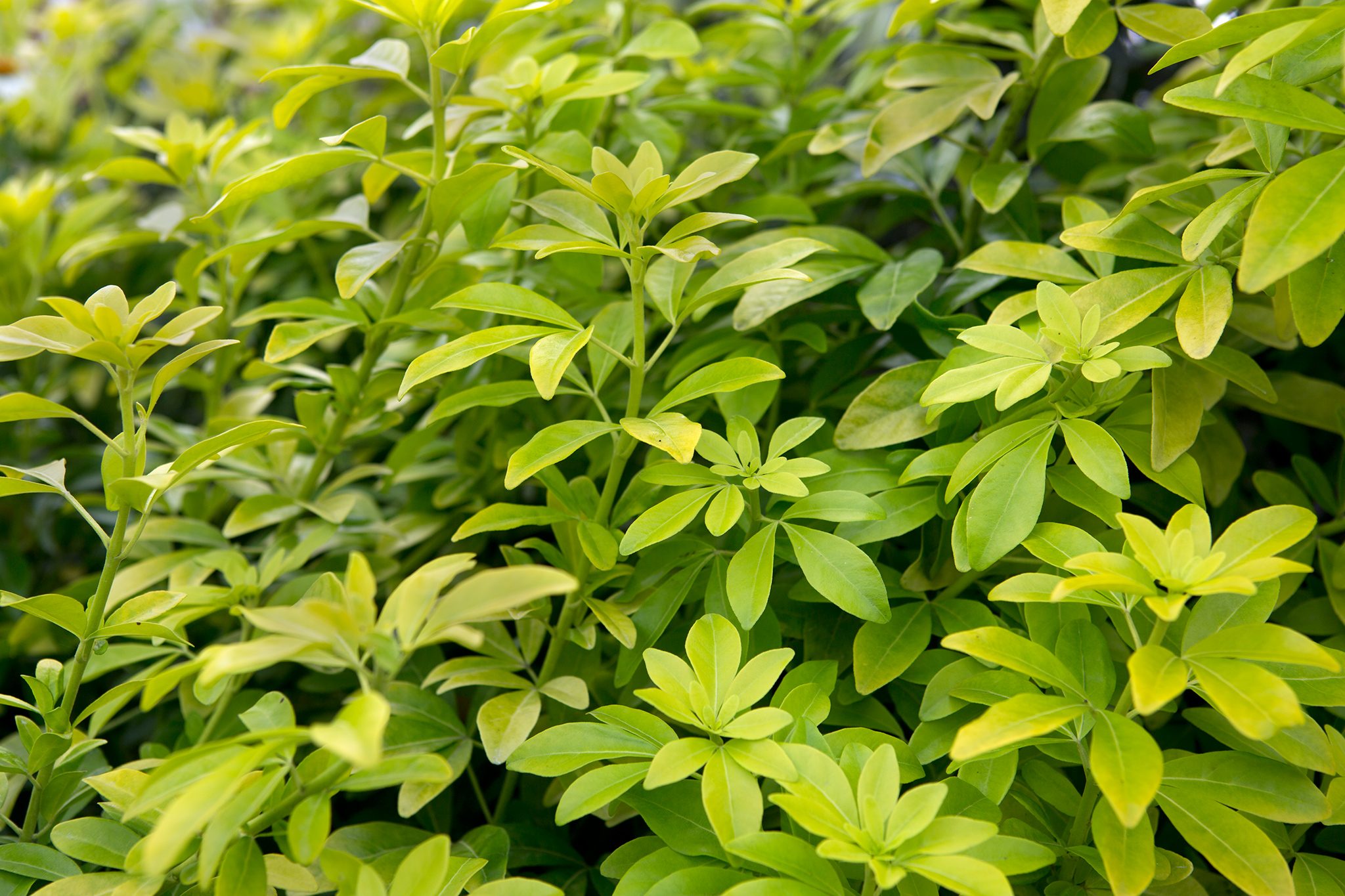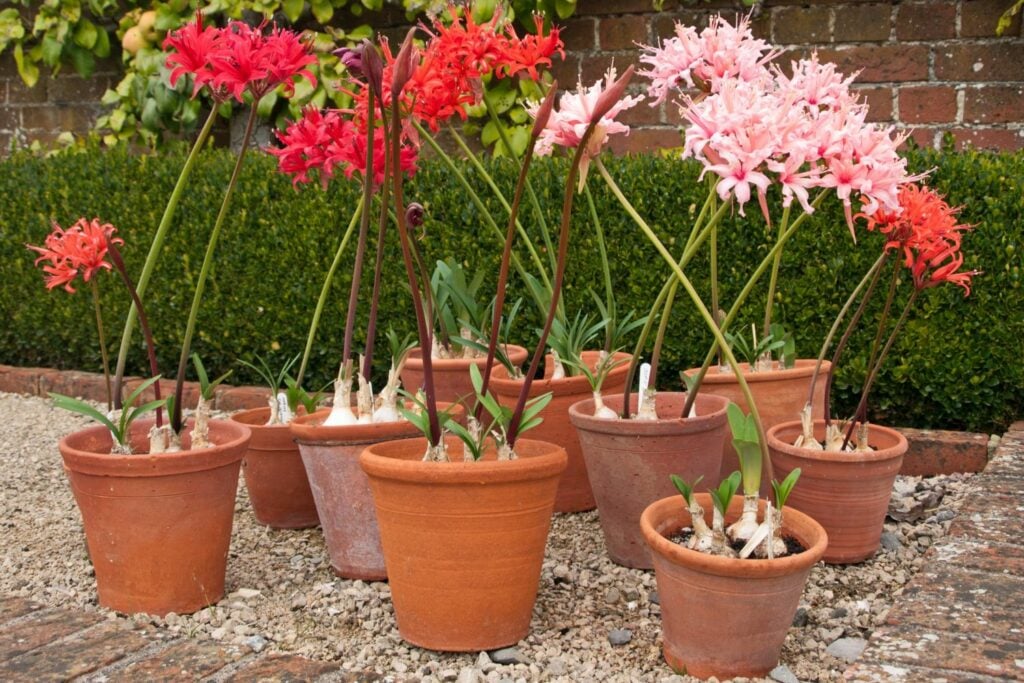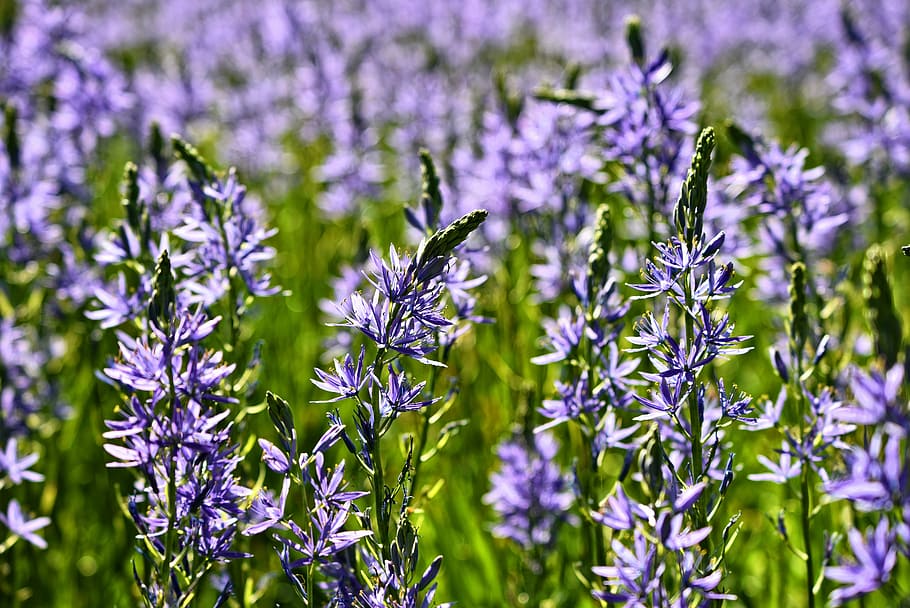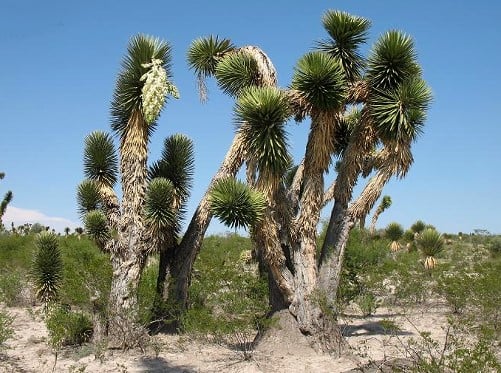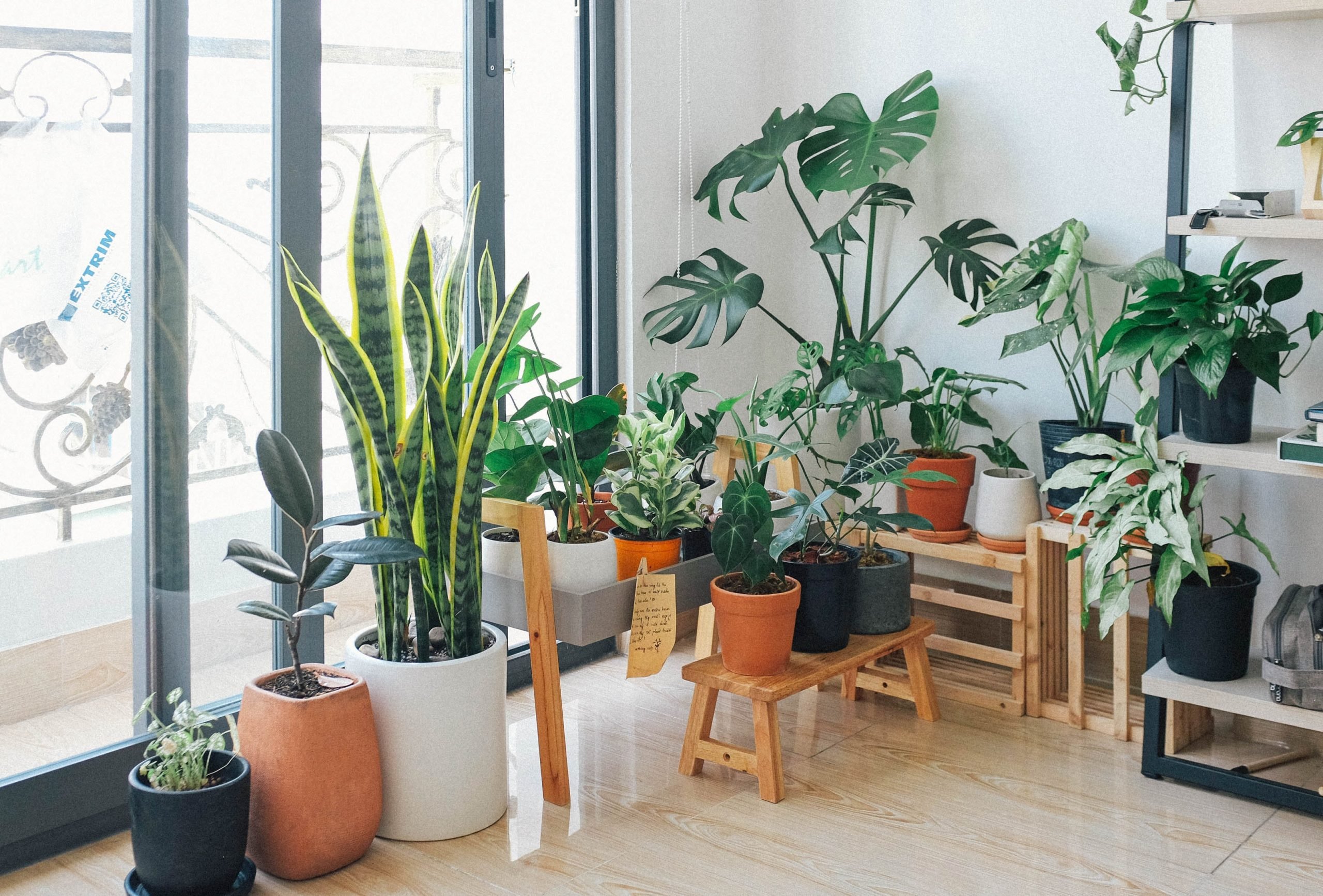How to Care for Your Osteospermum African Daisies
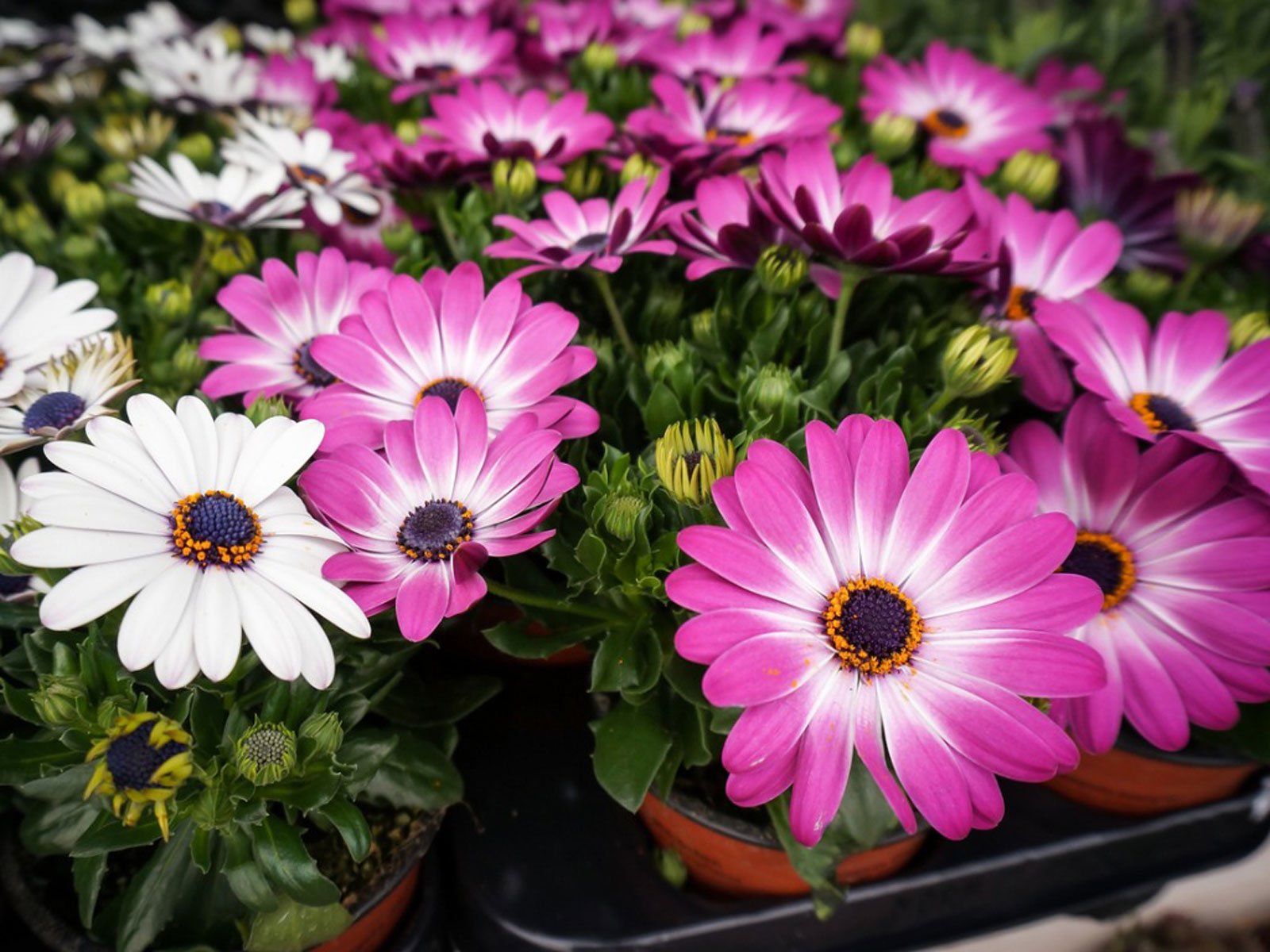
Table of Contents
African Daisies are breathtaking works of nature in South Africa’s stunning landscapes. These alluring blossoms, which belong to the Asteraceae family and go by various names like blue-eyed, daisybush, and Cape, stand out as some of nature’s finest works of art.
But this floral treasure trove is more complex than it first appears. While its annual equivalents, like the captivating Cape Marigold, mesmerize in the enchanting world of Dimorphotheca, the bulk of Osteospermum species grace gardens year after year because of their perennial durability.
Allow yourself to be carried away into a realm of flower wonders where African Daisies rule supreme and enchant everyone with their unmatched beauty.
Growing African Daisies with Seeds
There are a few important factors to consider when growing African Daisies from seeds, whether inside or outside. After the final spring frost, you can move the indoor- or indoor-started daisies outdoors. Cover the seeds lightly with a thin covering, giving them enough light to promote proper germination. The seeds must be kept wet until they sprout to give them the necessary hydration for growth. Following these instructions, you can successfully grow African daisies and see how their stunning blossoms adorn your garden or indoor space.
- Lighting Growth: When the new seeding gets ready to be planted outdoors, give them plenty of bright indirect lights during the early growth stage.
- Gradual Transition: Before transferring the seedlings to the outdoors, let them progressively acclimatize by ‘hardening off.’ Give them two weeks of outside exposure to help them adjust and build resilience.
- Encourage Bushier Growth: After putting the seedlings in their assigned outdoor site, pinch back the tender shoots to encourage a more compact and robust form.
Planting African Daisies
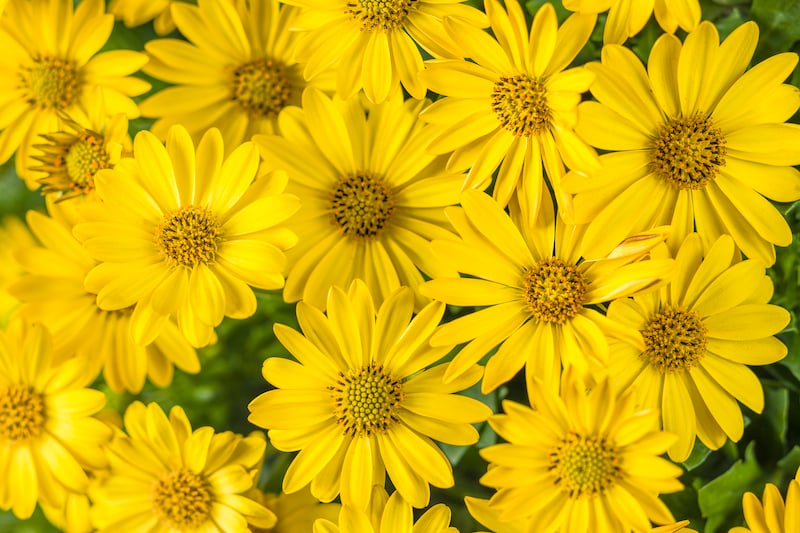
African daisies thrive in sunny, warm, and protected environments with dry to barely moist soil. They do not tolerate water logging. Thus, they require nutrient-rich soil, sandy to rocky, and well-draining. Additionally, expanded and crushed clay is included in our compost, which improves permeability. Further, organic fertilizers are already fertilized to provide your plants with all the essential nutrients, preventing additional fertilizer from being applied to your African daisies. For an even better blend of soil for African daisies, add extra expanded clay or coarse gravel to this compost. Additionally, expanded clay is helpful for even better drainage when growing African daisies in pots.
Osteospermum ‘African Daisies’ Care
1. Pruning
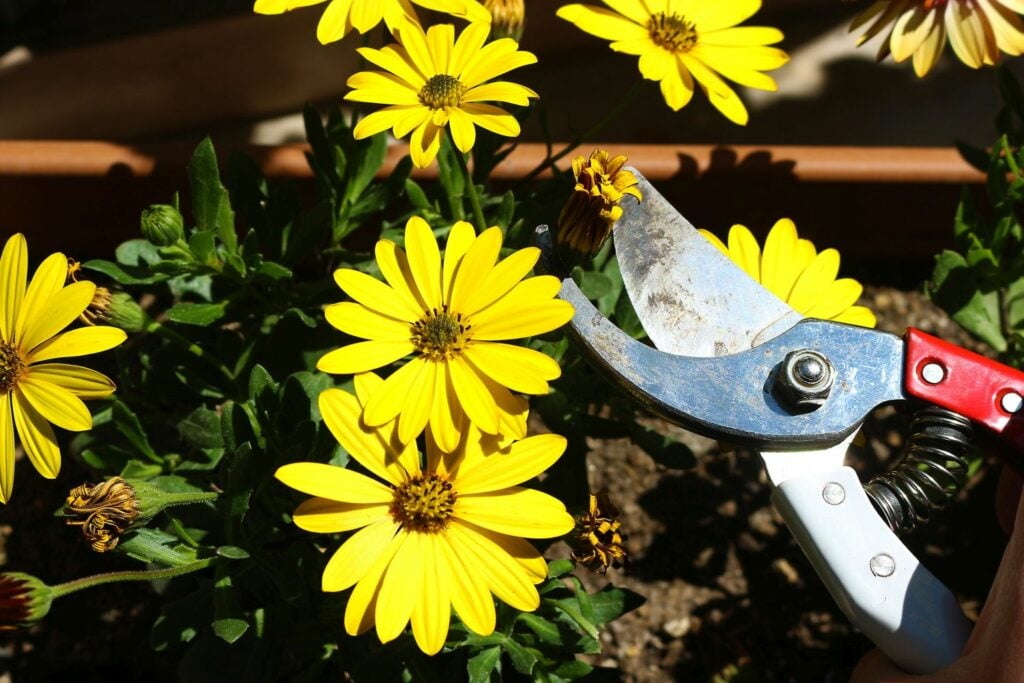
Although pruning is unnecessary for African daisies, it can help promote more compact growth. Pinching is an excellent method for achieving this. Trim the plant to three or four leaves approximately one to two weeks after planting. Since your Osteospermum plant only needs to support a few leaves through winter, pruning it before overwintering also aids in maintaining its strength for the upcoming season. Deadhead the fading flowers on your African daisies while they are in bloom. If done properly, osteospermum care can continue producing new flowers by being deadheaded.
2. Irrigation and Fertilization
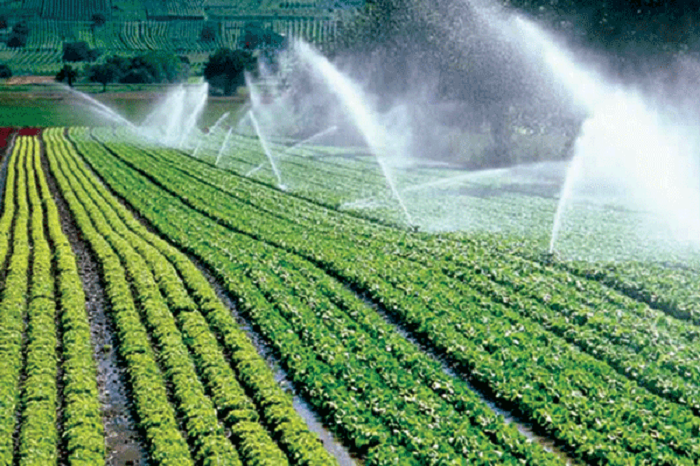
After planting and settling your African daisies, water them only when the soil is arid. Garden beds with African daisies hardly even require fertilization.
3. Potted African Daisies
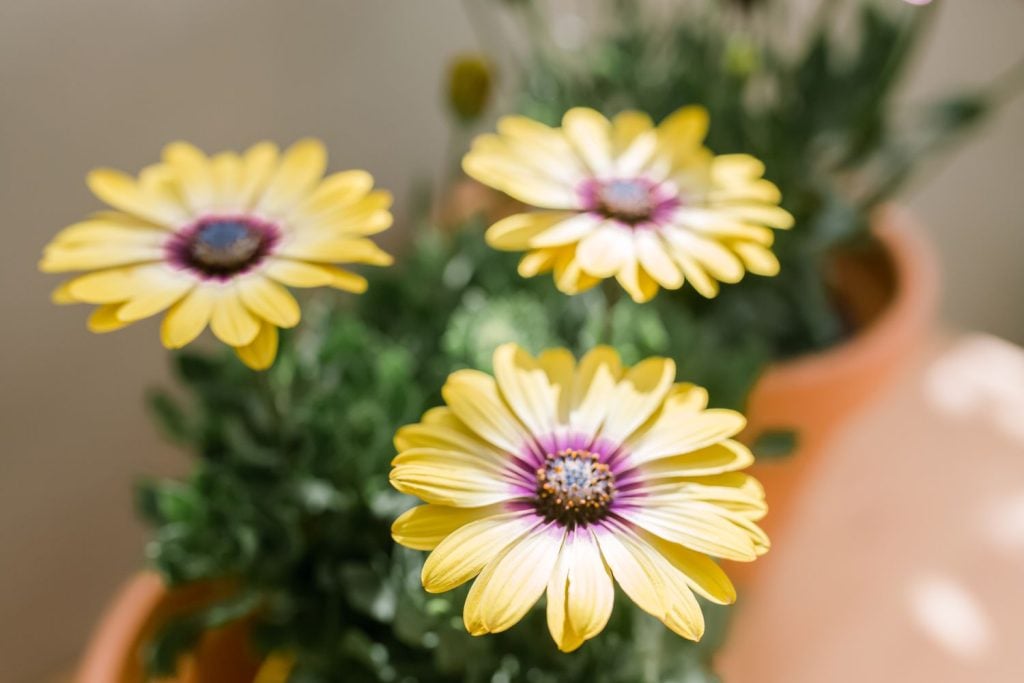
African daisies in pots have slightly differing hydration and fertilization needs. Every few days, examine the soil to see if it is dry to determine when to water your plants once more. This is important as African daisies do not tolerate persistent moisture. Fertilize potted African daisies with a liquid fertilizer every 2 weeks for optimum growth.
4. Propagating African Daisies
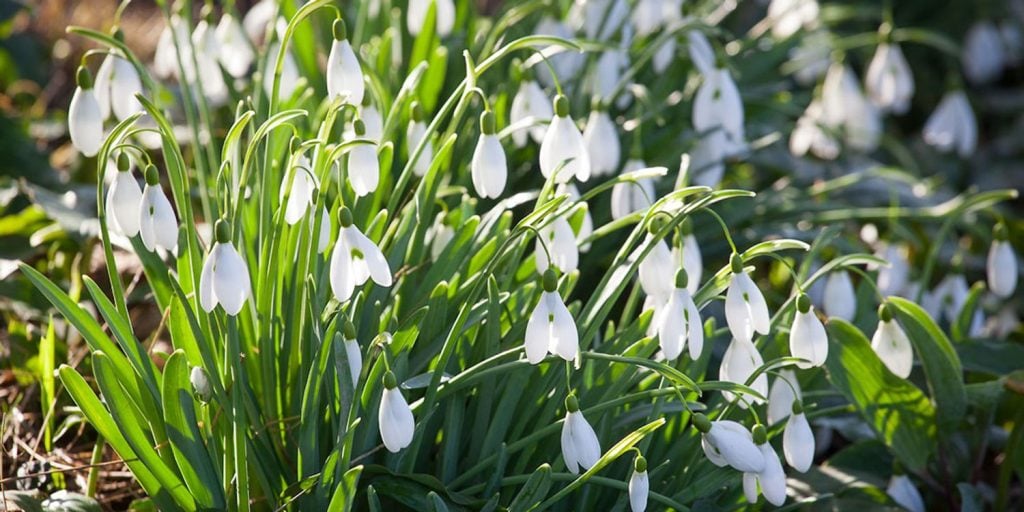
Cuttings are best taken in February or March. Cut 6 to 8 cm long shoots from an overwintering daisy, remove the leaves, and plant the nodes in a pot with potting soil to do this. Create the perfect environment for your African daisies by adding sand to the soil for improved drainage. The cuttings should be planted at temperatures between 21 and 23 C. After the last frost in the spring, you can grow your indoor- and indoor-started African daisies outside. The seedlings can be pinched to encourage fuller growth.
5. African Daisy Potting and Repotting
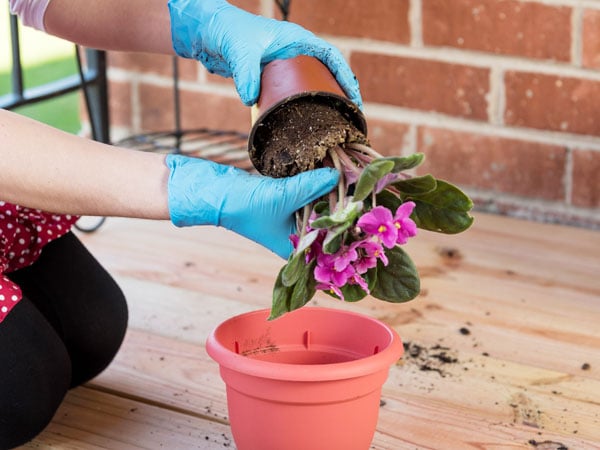
African daisies should be planted in a pot with suitable drainage holes. A potting mix that drains adequately is essential. Consider watering your garden’s plants more regularly than usual. Plant African daisies where they will receive direct sunlight. Given that nutrients can seep out with water, African daisies in containers may require fertilizing more often.
6. Typical Pests and Plant Illnesses
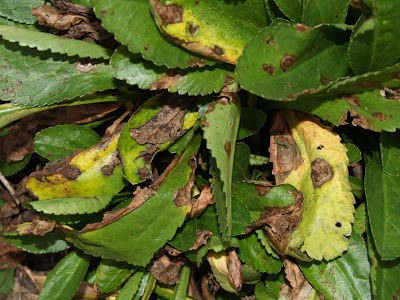
Few pests or diseases harm African daisies if they are kept stress-free in the right environment. However, in damp or humid areas, look for fungus problems. These problems will manifest as distorted or damaged leaves. Use a fungicide, if necessary, for Osteospermum care and try to improve the airflow around your plant to help ward against fungal diseases. Two frequent pests that might be problematic are whiteflies and aphids, especially for stressed plants. However, you can control them with an insecticidal soap or chemical spray if found in time.
7. Location to Plant
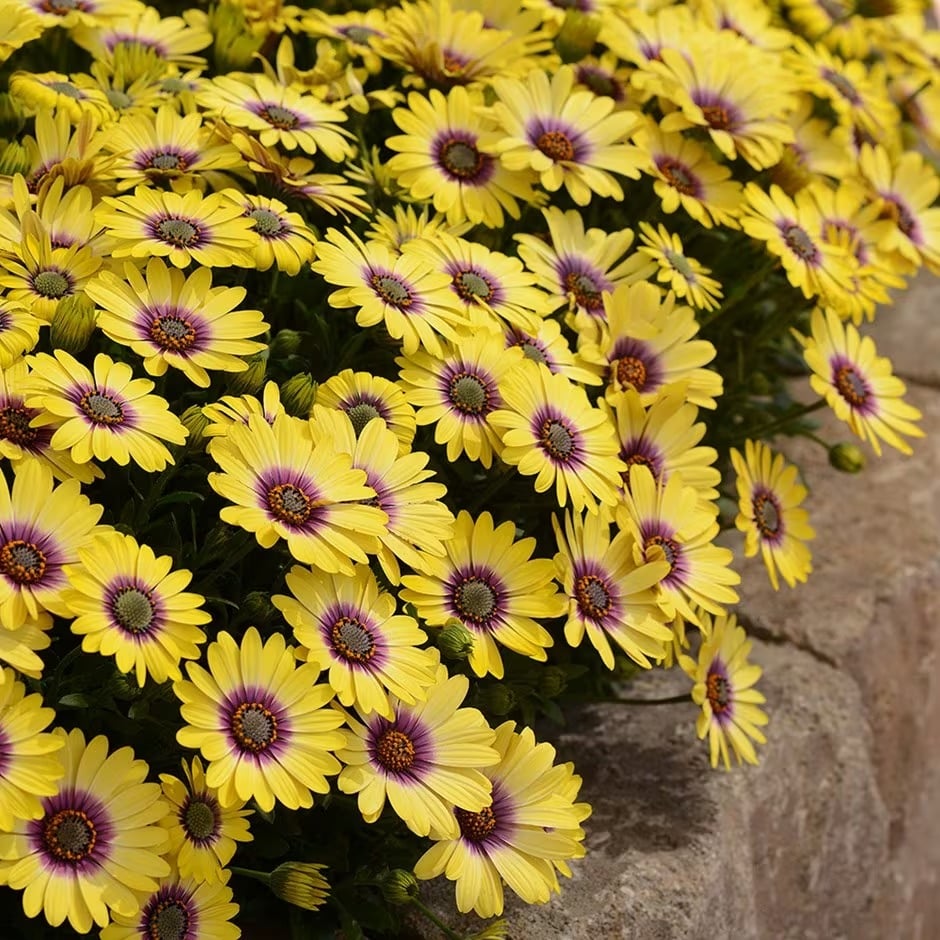
Instead of being displayed in groups of one or two, the African Daisy looks best in sheets and swathes of flowering plants and imitates how it naturally appears. A row of containers filled with vibrantly coloured varieties placed along the edge or on the parapet of patios and decks can provide subtle ornamental value to your enclosure. African daisies can be used to edge or line walks; try alternating patches with variation in soft, pastel colours, such as white and pink or yellow and purple.
Types of Osteospermum African Daisies
1. Enchanting Blue Harmony
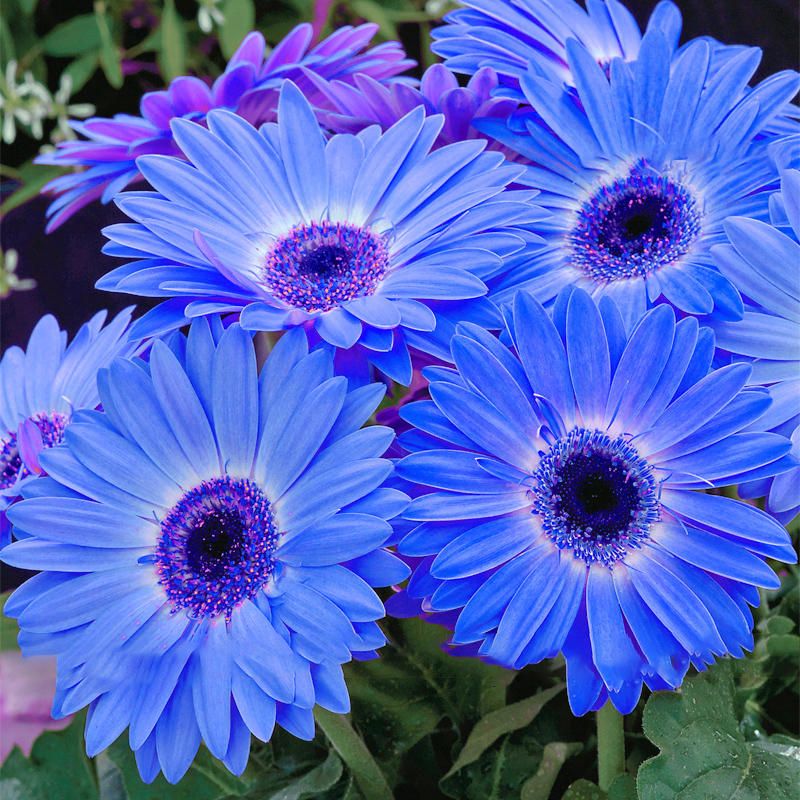
Explore a mesmerizing Osteopermum ecklonis selection with a distinctive blue and yellow interplay at its core. A beautiful symphony of colours can be seen in the petals as they change from a deep purple centre to a delicate yellow periphery.
2. Floral Whimsky Pink
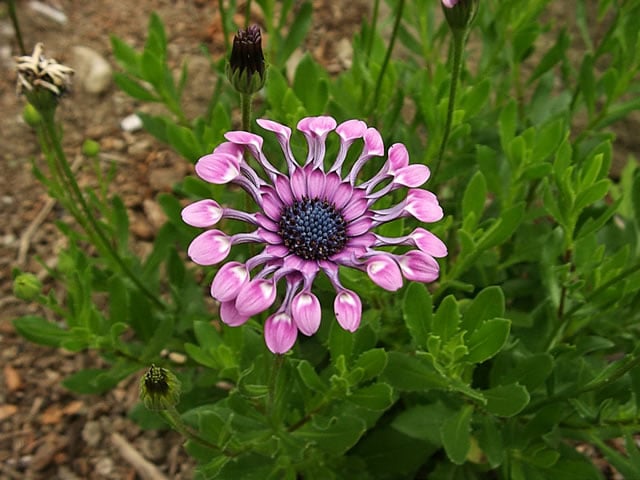
In this type of variety, the petals curl like ornate spoons and are carefully painted in pink and blue to create a visual treat for your eyes.
3. Lemon Serenade
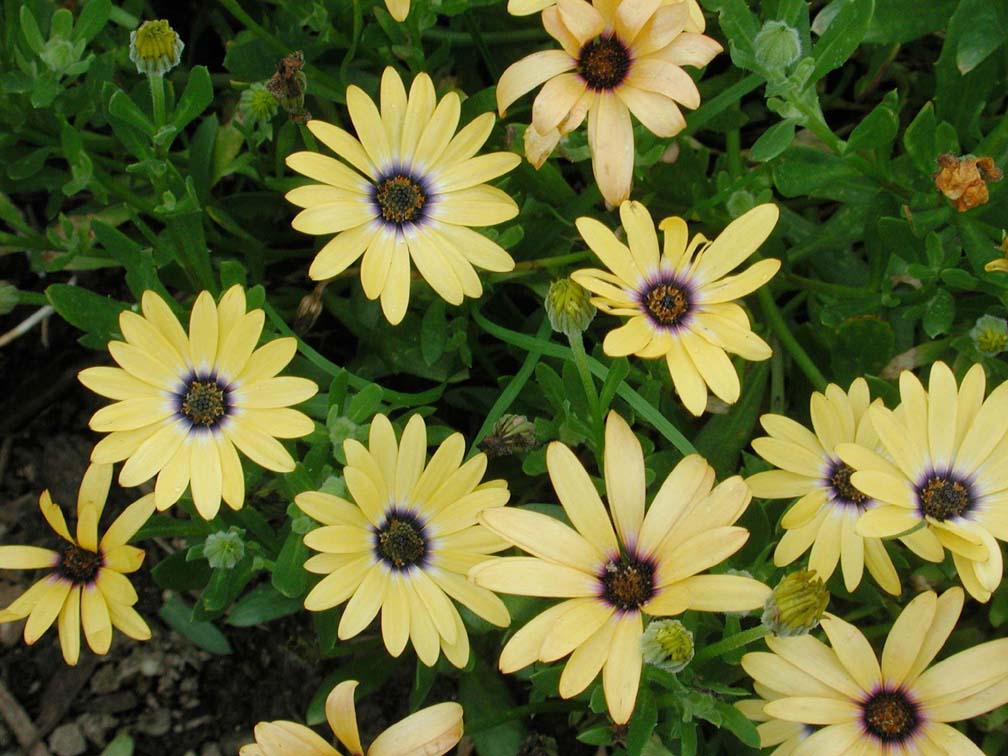
Allow this exceptional hybrid cultivar to serenade you with its cheery yellow petals enclosing a regal purple center, beautifully complemented by an alluring orange eye, and entrancing all who see its beauty.
4. Ivory Sonata

Immerse yourself in the exquisite elegance of this hybrid daisy,’ Ivory Sonata,’ with its snow-white petals. It orchestrates a mesmerizing symphony of hues with its alluring blue center around majestic rings of yellow and purple.
5. Copper Aurora’s Ballet
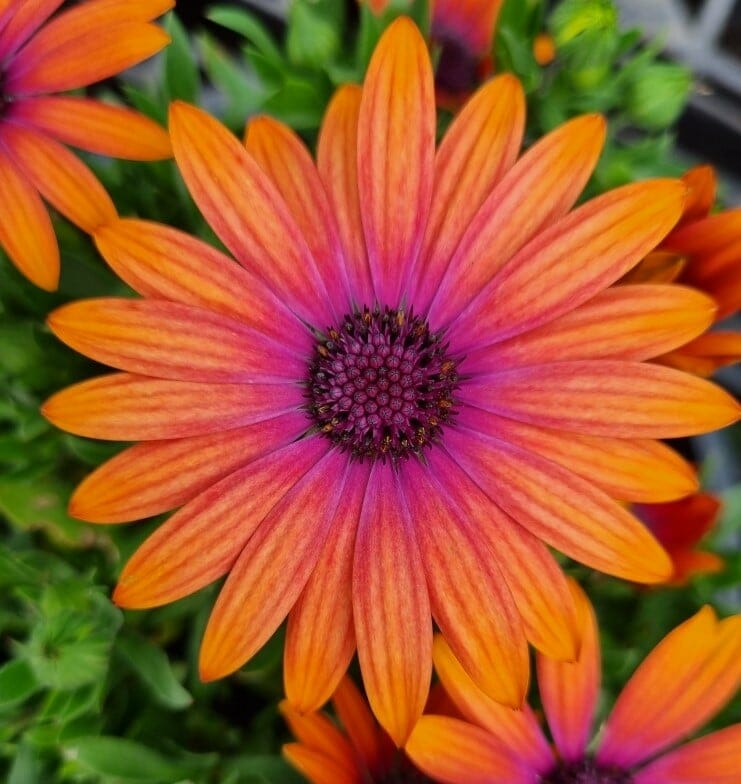
It is a magnificent cultivar with petals carefully paired with an orange and purple center to create a ballet of colors that will take your breath away.
Conclusion
Witness the joy that African Daisies bring to every garden as you indulge in their beauty. These flowers effortlessly add elegance and energy to any outdoor setting with colorful shades, elaborate petal patterns, and gorgeous blossoms.
Allow African Daisies to work their magic and turn your garden into a haven of amazing natural beauty as they enchant you with their charm.
Learn about the transformative power of African Daisies and let their mesmerizing presence enchant your senses while transforming your outdoor sanctuary into a floral wonderland.
Appreciate the beauty they provide and observe your landscape flourish with an eternal appeal.
Frequently Asked Questions
Can African Daisies in Pots Be Brought Inside for The Winter?
Daisies don’t make good indoor plants, unlike some delicate perennials. Outside African daisies in pots sometimes perish when moved indoors unless you’re lucky enough to have a sunroom or another suitable environment. The best method for gardeners who want to overwinter African daisies is typically to take cuttings and root them indoors.
Why Aren’t My African Daisies Blooming?
African daisies occasionally do not bloom. Unfavourable side circumstance typically causes this. African daisies will be pushed to their limits by cold, wet conditions, insufficient sunlight, or saturated soil. Finding a suitable place is crucial because such conditions do not satisfy the plant’s requirements for a profusion of flowers. You will, unfortunately, have to wait if the weather isn’t cooperative. Eventually, the vibrant blossoms will emerge on their own.
How Frequently Should African Daisies Be Watered?
African daisies prefer stable soil moisture levels. Depending on the weather and the soil’s ability to retain moisture, water them deeply once or twice a week. Avoid overwatering because wet soil can promote root rot, and underwatering can make plants wilt and reduce their ability to bloom.
Why Do African Daisies Need Fertilizer?
During the growing season, give African daisies a balanced, slow-release fertilizer. Apply the fertiliser to the plant every six to nine weeks, as instructed on the fertilizer’s container. This will ensure a consistent supply of nutrients for strong plant development and colorful blooms. Additionally, improving the soil’s fertility before planting by adding organic matter can help.
Do I Need to Deadhead the Wilting Flowers?
For African daisies, routine deadheading is advised to encourage prolonged flowering. By cutting the stems just above a group of healthy leaves or buds, faded blossoms can be removed. Preventing the plant from focusing energy on seed development encourages the establishment of new buds and prolongs the flowering period.
Are Pollinators Attracted to African Daisies?
African daisies draw pollinators like bees and butterflies to their colorful, nectar-rich blossoms. Using African daisies, you may enhance pollinator populations and advance biodiversity in your garden.

